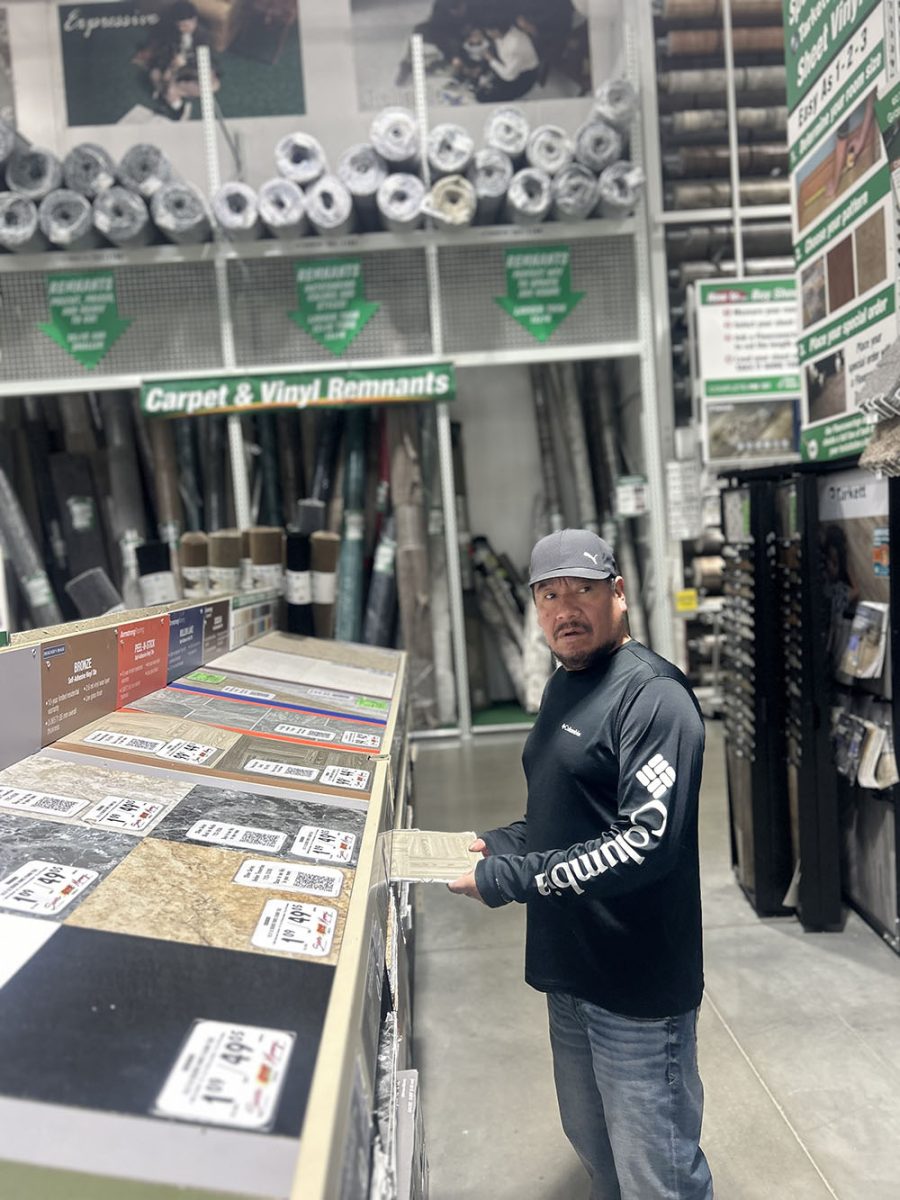A guide to sustainable fashion
December 4, 2021
If you’ve ever done some back-to-school shopping or maybe you went on a little shopping spree, say at H&M, Zara, GAP or maybe Pacsun, you will likely notice tons of new styles with fairly cheap prices and lots of great deals, especially during the back-to-school season. Chances are though, that cute shirt you purchased from H&M for a great deal was made with cheap materials like polyester or cotton by a garment worker overseas.
As increased information is revealed about the climate crisis and the environment, more questions are being asked about sustainable fashion and ethical fashion. More research is being conducted on ethical sourcing and biodegradable materials. As more knowledge about the state of the earth and pollution comes out, fingers are continuously being pointed towards fast fashion and textile waste. But what does this all mean?
Let this be a guide to all things sustainable fashion; how to begin a more sustainable lifestyle, fast fashion and its effects on the environment, the never-ending plight to preserve the planet and the controversies surrounding sustainable fashion.
Fast fashion is the churning out of clothing made of cheap materials and made by cheap labor at an incredibly fast rate in order to meet consumer demand. This was popularized most famously by clothing stores like Zara, Forever 21 and H&M in the 2000’s.
More recently, with the advent of social media and platforms like Tik Tok and Instagram, individuals are able to share things online and potentially the whole world is able to see it, causing an increase in trend churn-over rates.
Clothing trends last mere weeks. In order to keep up with this demand, companies utilize cheap labor and resources to match the speed with which trends change — hence fast fashion.
This process has created an incredibly materialistic and consumerist society, where everyone must get the new edition and keep up on the latest trend.
Sustainable fashion, however, is quite the opposite. Sustainability is the meeting of our own needs without compromising the needs of future generations. As defined by Faye Wessler on the Green Dreamer website, it is “clothing that is designed, manufactured, distributed, and used in ways that are environmentally friendly.” This can also include ethical fashion that has laborers’ safety in mind.
If you live on the planet, this affects you.
According to the EPA, some 11.3 million tons of clothing were left for landfills in 2018, that is around 84% of all clothing. AATCC reports on the properties of various textiles, for example cotton, silk, wool and linen are all biodegradable.
However, the problem occurs when these fabrics are mixed with man-made materials and synthetic fibers like polyester, rayon, and nylon. Because most items of clothing are mixed with these fibers to add some stretch, they tend to cost less. The majority of textiles left to landfills are not biodegradable, meaning they are unable to be naturally broken down.
Essentially, fast fashion is not sustainable. The way in which corporations make their money is not one that can be sustained over long periods of time; eventually the earth will be unable to handle the insane amount of clothing waste being pumped out.
The fast fashion industry is an incredibly environmentally harmful industry, not to mention the harm it causes its laborers.
Ethical Made Easy states that in Australia alone, only 4% of the total money spent on clothing actually goes to garment workers. This issue affects women significantly more than it affects men, as more than 80% of all garment workers are women, highlighting a disparity in wages.
Corporations have typically used cheap labor in developing nations countries where there are few laws protecting laborers, therefore exploiting citizens of different countries.
With all these factors considered, here are some things YOU can do to live more sustainably:
Firstly, buy second hand as often as you can. If you go into any Salvation Army or Goodwill, you will notice how many clothing items there are, so please utilize that resource. However, be mindful of your current situation and be considerate to others’ situations. For example, around winter time, avoid buying essential items like snow boots and coats and leave those behind for individuals whose only resource would be second-hand stores.
Second, consider working with the clothes you already have. Don’t throw your clothes out because of a stain, take them to a laundromat with higher power washers or use at-home stain remedies. Alter clothes that you still love but just no longer fit you. Normalize re-wearing outfits. Mix and match the pieces you do have. Carefully analyze your current wardrobe and only purchase clothing pieces you need or that would fit well with your wardrobe.
Third, try to invest in higher quality, staple pieces. They might be a little pricier but never go out of style and will last years and years.
Most importantly, consider others’ situations, once again. Often, sustainable advocates will wholeheartedly shun fast fashion but don’t always realize others’ situations. For example, some lower income individuals will not be able to afford pricier sustainable pieces. Sustainable companies have infamously not always been size-inclusive, limiting options for many individuals.
Do not shame people for not doing enough; if everyone does the best they can, a significant difference will be made.












flora • Jan 19, 2022 at 12:46 pm
great article (: